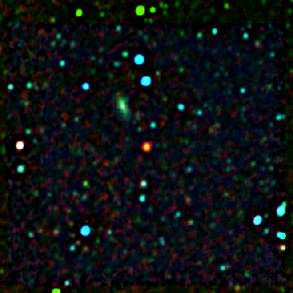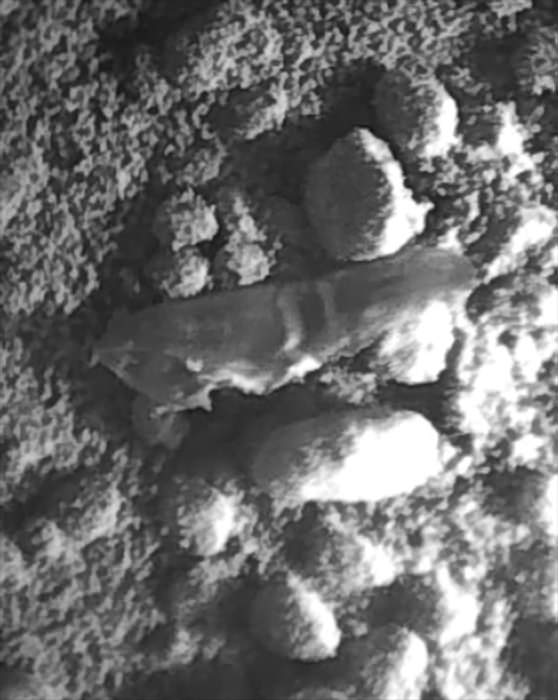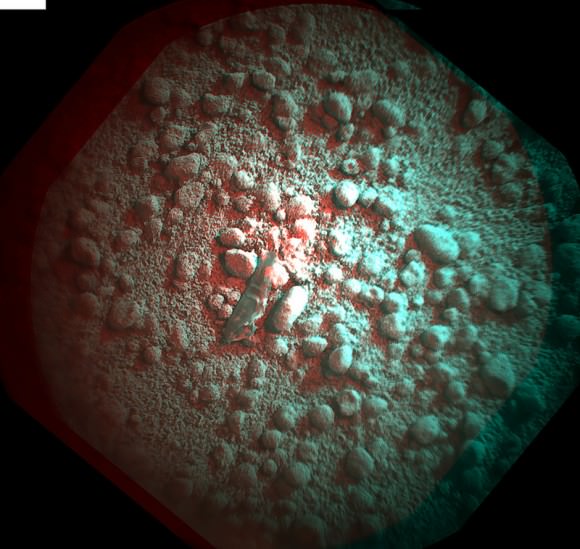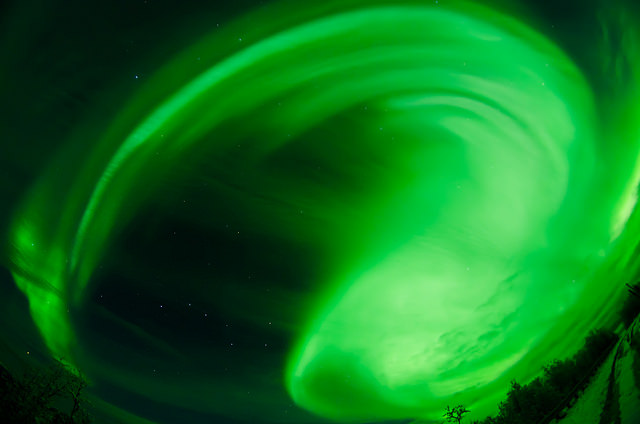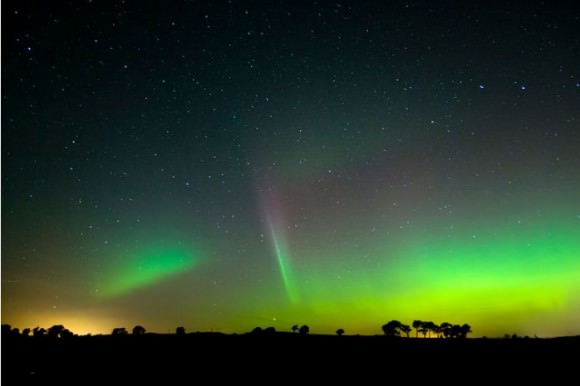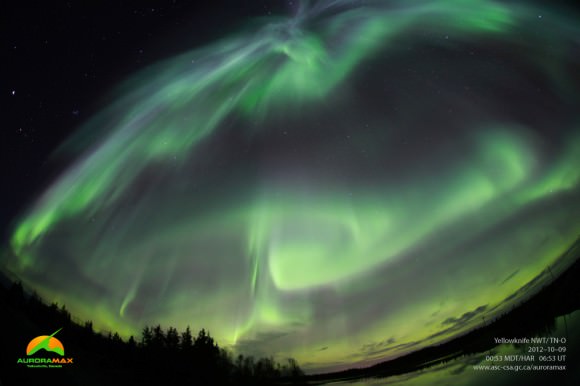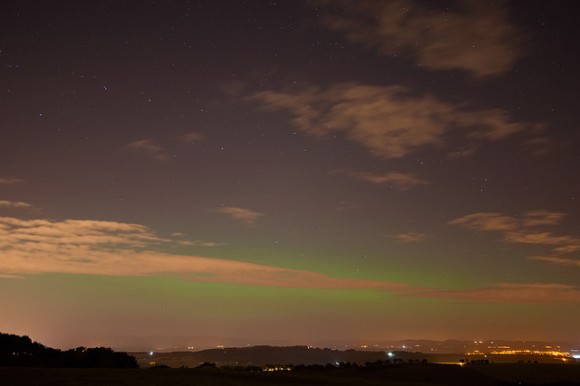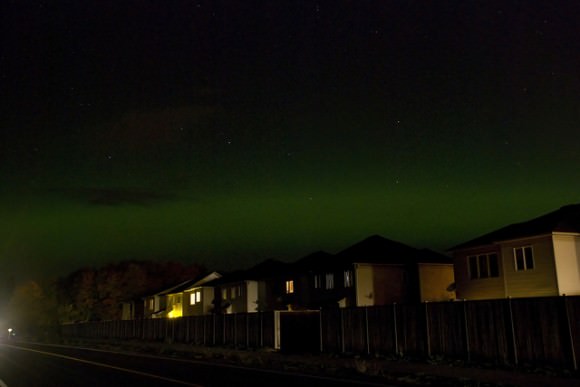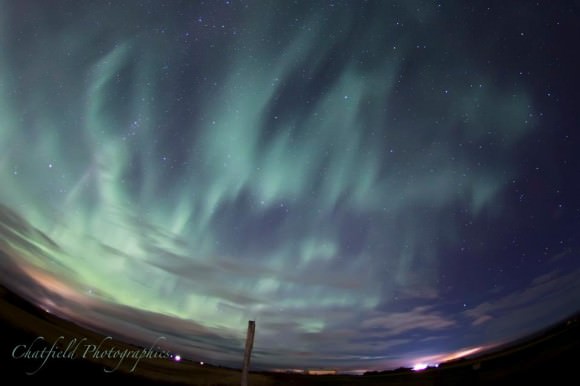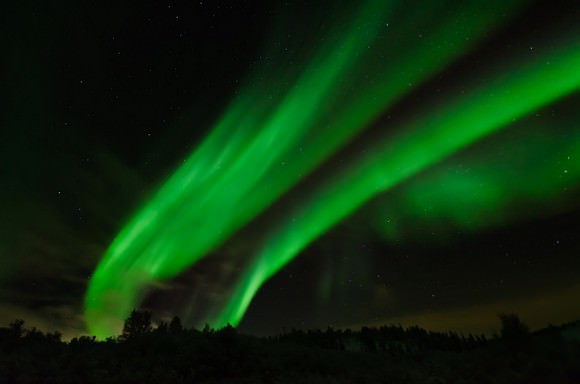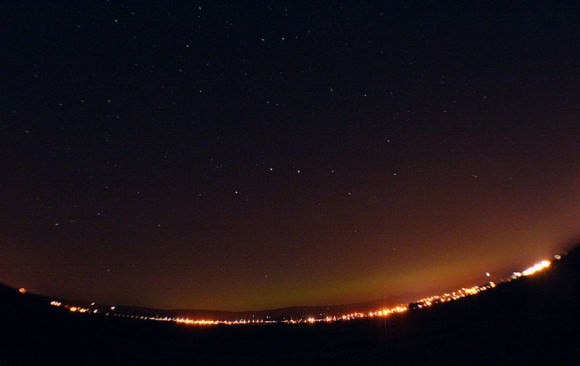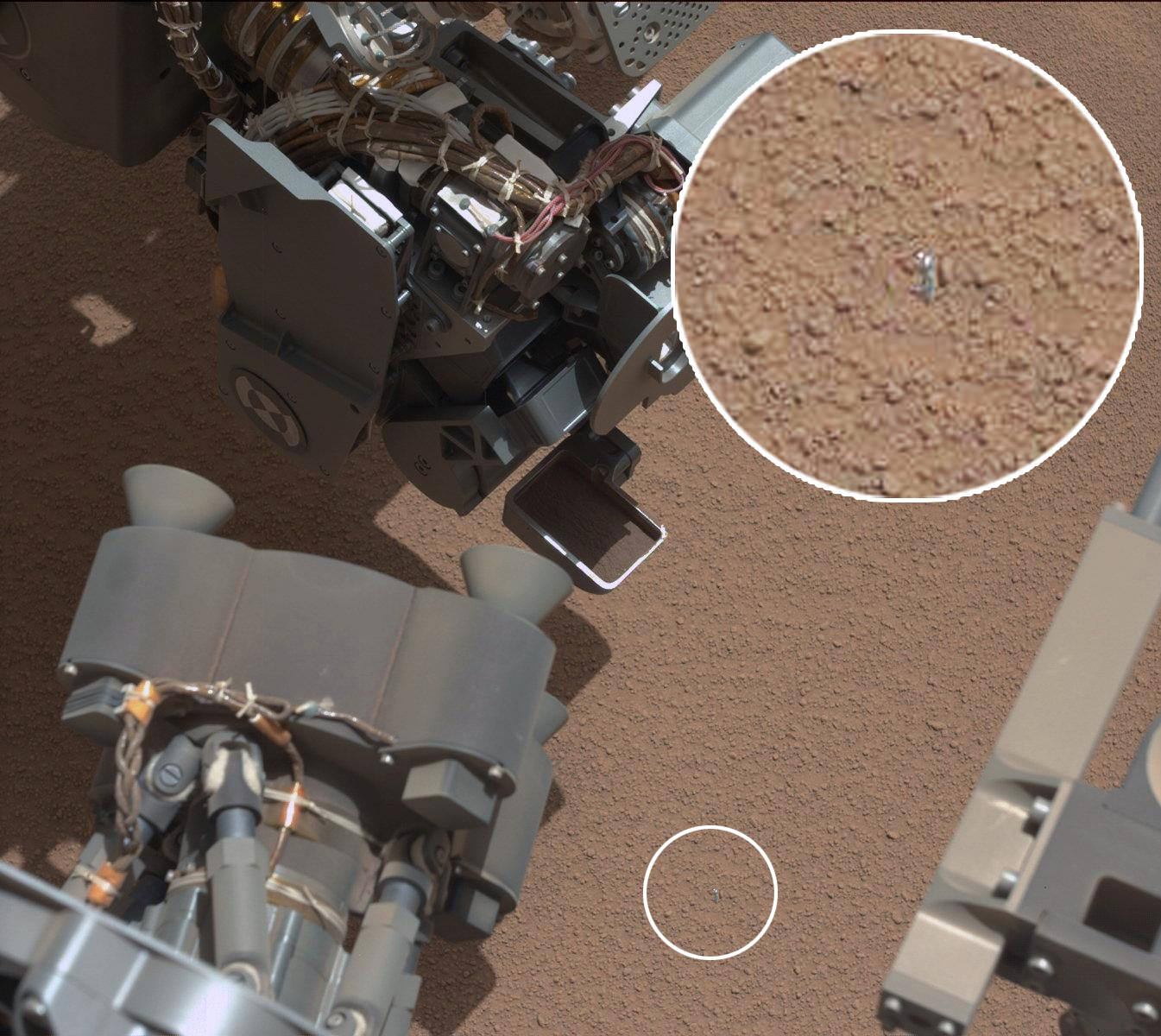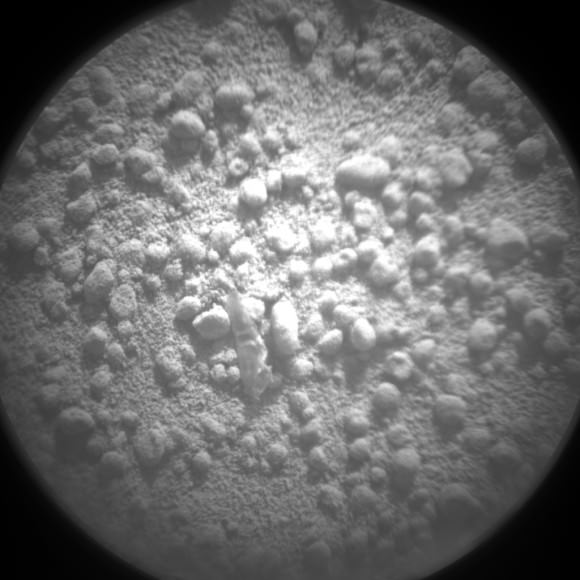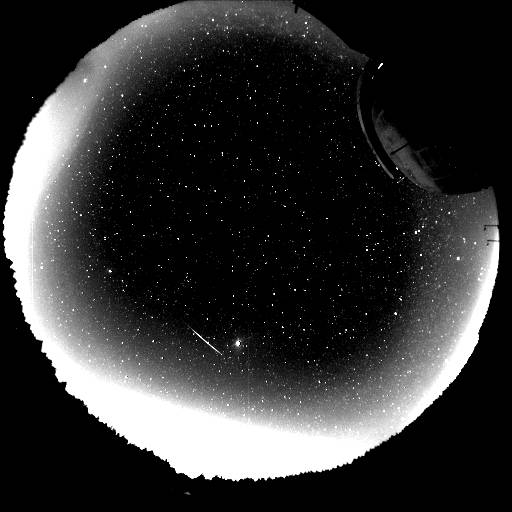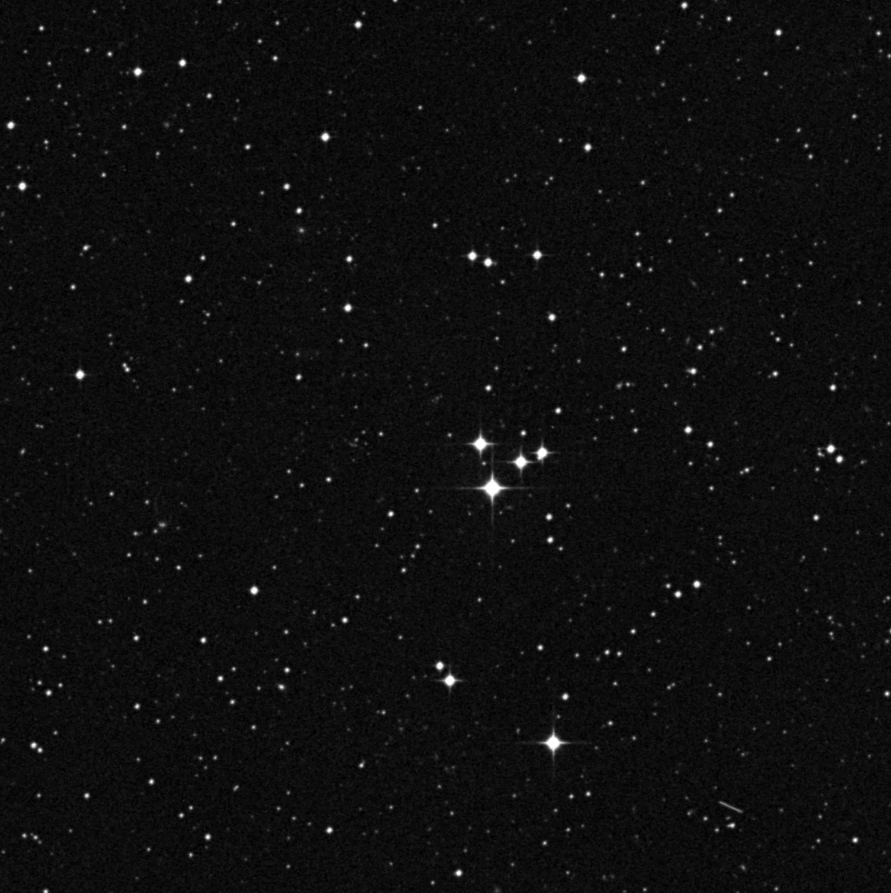Greetings, fellow SkyWatchers! With early evening dark skies, this is a perfect opportunity to take on some more serious studies. We’ll start off BIG… and work down to the really small. (Think Hickson Compact Groups.) There’s even a meteor shower this week! Now, get out your telescopes and get ready, cuz’ I’m waitin’ in the backyard and lookin’ for the “Double Dark”…
Monday, October 8 – Today marks the birthday of Ejnar Hertzsprung. Born 1873, Hertzsprung was a Danish astronomer who first proved the existence of giant and dwarf stars in the early 1900s. His discoveries included the relationship between color and luminosity, which wasn’t truly recognized until it was recovered by Henry Russell. Now it is a familiar part of all our studies as the Hertzsprung-Russell diagram. His use of absolute magnitudes will come into play tonight as we have a look at the age-old mystery of M73.
Located about three fingerwidths north-northwest of Theta Capricorni (RA 58.9 Dec -12 38), this 9th magnitude open cluster consisting of four stars was discovered by Charles Messier on October 4, 1780. He described it as a “Cluster of three or four small stars, which resembles a nebula at first glance…” Hotly debated as to whether or not the grouping is a genuine cluster or simply an asterism, it was also included in J. Herschel’s catalog (GC 4617) and given the NGC 6994 designation by Dreyer. In 1931 Collinder cataloged M73 as Cr 426, with an estimated distance of 12,000 light-years. Still, the debate about its authenticity as a physically related group continued.
At least two stars show the same proper motion, leading scientists to believe M73 may be the remnant of a much older and now dispersed cluster – or simply two related stars. Of the 140 stars investigated in the region, 24 may be real members, including those in Messier’s original observation. Thanks to the work of Hertzsprung and Russell, these candidates fall within the color-magnitude diagram of a 2 to 3 billion year old cluster with Messier’s suspect four being evolved giants. The most recent data indicates M73 may simply be an asterism – sharing no common proper motion, but until more studies are undertaken you can enjoy this unusual Messier in even a small telescope!
Tuesday, October 9 – Tonight is the peak of the Draconid meteor shower whose radiant is near the westering constellation of Hercules. This particular shower can be quite impressive when comet Giacobini-Zinner passes near Earth. When this happens, the fall rate jumps to 200 per hour and has even been known to reach 1000. So what am I going to tell you about this year? Comet Giacobini-Zinner reached perihelion on July 2nd of 2005, passing with 8 million kilometers of Earth, but has now greatly distanced itself from our solar system. Chances are the Draconids will only produce around 3 to 5 per hour, but no one knows for sure!
While we’re out, let’s take the time to have a peek at M72, just about a degree and a half west (RA 20 53.5 Dec -12 32) of last night’s target M73.
Originally found by Mechain on the night of August 29-30, 1780, this class IX globular cluster is one of the faintest and most remote of the Messiers, and Charles didn’t catalog it until over a month after its discovery. At around magnitude 9, this 53,000 light-year distant globular will be not much more than a faint round smudge in smaller aperture, but will take on a modicum of resolution in larger telescopes. Well beyond the galactic center and heading toward us at 255 kilometers per second, M72 is home to 42 variables and the average magnitude of its members is around 15. While mid-sized scopes will pick up a graininess in the texture of this globular, notice how evenly the light is distributed, with little evidence of a core region. Be sure to write down your observations!
Wednesday, October 10 – Today in 1846, William Lassell was busy at his scope as he made a new discovery – Neptune’s moon Triton! Although our everyday equipment can’t “see” Triton, we can still have a look at Neptune which is also hanging out in tonight’s study constellation of Capricornus. Try checking astronomy periodicals or many great on-line sites for accurate locator charts.
Tonight let’s head to the eastern portion of Capricornus and start by identifying Zeta about a fistwidth southwest of the eastern corner star – Delta. Now look southeast about 2 fingerwidths and identify 5th magnitude star 41. About one half degree west is our target we’ll be revisiting this evening, M30 (Right Ascension: 21 : 40.4 – Declination: -23 : 11).
At near magnitude 8, this class V globular cluster is well suited to even binoculars and becomes spectacular in a telescope. Originally discovered by Messier in August 1764 and resolved by William Herschel in 1783, some of M30?s most attractive features are the branches of stars which seem to radiate from its concentrated core region. Estimated to be around 26,000 light-years away, you’ll find it fairly well resolved in large aperture, but take time to really look. The dense central region may have already undergone core collapse – yet as close as these stars are, very few have collided to form x-ray binaries. For the smaller scope, notice how well M30?s red giants resolve and be sure to mark your notes!
Thursday, October 11 – Tonight is time for a telescopic challenge – a compact galaxy group. You’ll find it less than half a degree southeast of stellar pair 4 and 5 Aquarii (RA 20 52 26.00 Dec -05 46 19.1).
Known as Hickson 88, this grouping of four faint spiral galaxies is estimated to be around 240 million light-years away and is by no means an easy object – yet the galactic cores can just be glimpsed with mid-sized scopes from a very dark site. Requiring around 12.5? to study, you’ll find the brightest of these to be northernmost NGC 6978 and NGC 6977. While little detail can be seen in the average large backyard scope, NGC 6978 shows some evidence of being a barred spiral, while NGC 6977 shows the even appearance of a face-on. Further south, NGC 6976 is much smaller and considerably fainter. It is usually caught while averting and studying the neighborhood. The southernmost galaxy is NGC 6975, whose slender, edge-on appearance makes it much harder to catch.
Although these four galaxies seem to be in close proximity to one another, no current data suggests any interaction between them. While such a faint galaxy grouping is not for everyone, it’s a challenge worthy of seasoned astronomer with a large scope! Enjoy…
Friday, October 12 – Today in 1891, the Astronomical Society of France was established. Exactly one year later in 1892, astronomy great E. E. Barnard was hard at work using the new tool of photography and became the first to discover a comet – 1892 V – in this way!
Not only did Barnard use photography for comets, but his main interest of study was details within the Milky Way. Tonight let us take out binoculars or a telescope at the widest possible field of view and have a look at two such regions in the westering Aquila – The “Double Dark Nebula.”
Just northeast of Altair is bright star Gamma Aquilae, and about a fingerwidth west is a pair of Barnard discoveries: B142 and B143 – two glorious absences of stars known as interstellar dust clouds. B143 is no more than a half degree in size and will simply look like a blank area shaped like a horseshoe, with its extensions point toward the west. Just south is B142, an elongated comma shape, which seems to underline its companion.
Located anywhere from 1000 to 3000 light-years away, these non-luminous clouds of gas and dust are a very fine example of Barnard’s passion. Do not be upset if you don’t see them on your first attempt – for the chances are if you are seeing “nothing,” you are looking in the right place!
Saturday, October 13 – Today marks the founding of the British Interplanetary Society in 1933. “From imagination to reality,” the BIS is the world’s oldest established organization devoted solely to supporting and promoting the exploration of space and astronautics.
Tonight we’ll do them proud as we go back for another look at the mighty M2. You’ll find it located about three fingerwidths north-northeast of Beta Aquarii (RA 33.5 Dec 00 49).
At slightly dimmer than 6th magnitude, this outstanding globular cluster is just inside that region where it can’t quite be viewed unaided, but even the smallest of binoculars will pick it out of a relatively starless field with ease. Holding a Class II designation, it was first discovered by Maraldi on September 11, 1746 and rediscovered independently by Messier exactly 14 years later. At a distance of roughly 37,500 light-years, it is estimated to contain in the neighborhood of 150,000 stars.
Even a small telescope will reveal M2’s rich and concentrated core region and slight ellipticity. Not bad for a 13 billion year old group of stars! As aperture increases, some of the brightest stars will begin to resolve, and in larger telescopes it will approach total resolution. You might well note a dark area in the northeastern section, and several more located throughout the splendid field. Feast your eyes on one of the finest in the skies!
Sunday, October 14 – Before we leave Cygnus for the year, try your luck with IC 5070 (Right Ascension: 20 : 50.8 – Declination: +44 : 21), also known as the “Pelican Nebula.” You’ll find it just about a degree southeast of Deneb and surrounding the binary star 56 Cygni.
Located around 2000 light-years away, the Pelican is an extension of the elusive North American Nebula, NGC 7000. Given its great expanse and faintness, catching the Pelican does require clean skies, but it can be spotted best with large binoculars. As part of this huge star forming region, look for the obscuring dark dust cloud Lynds 935 to help you distinguish the nebula’s edges. Although it is every bit as close as the Orion Nebula, this star hatchery isn’t quite as easy!
Now let’s give deep sky a rest as we travel to the northwest corner of Capricornus and have a look just south of Alpha at beautiful Beta.
Named Dabih, this lovely white 3rd magnitude star has a very easily to split 6th magnitude companion which will appear slightly blue. Over 100 times brighter than our own Sun, the primary star is also a spectroscopic triple – one whose unseen companions orbit in a little over 8 days and 1374 days. Oddly enough the B star is also a very tight binary as well – yet the two major stars of this system are separated by about a trillion miles! If you have a large aperture telescope – power up. According to T. W. Webb, a 13th magnitude unrelated double is also found in between the two brighter stars. No matter if you chose binoculars or a telescope, I’m sure you’ll find the 150 light-year trip worth your time to add to your doubles list!
Until next week? Wishing you clear skies!
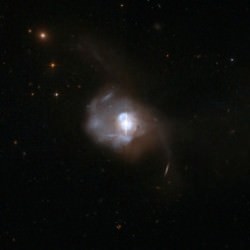 Astronomers compare the extreme case of ULASJ1234+0907 with the relatively nearby and well-studied Markarian 231. Markarian 231, found just 600 million light-years away, appears to have recently undergone a violent collision with another galaxy producing an example of a dusty, growing black hole in the local Universe. By contrast, the more extreme example of ULASJ1234+0907, shows scientists that conditions in the early Universe were more turbulent and inhospitable than today.
Astronomers compare the extreme case of ULASJ1234+0907 with the relatively nearby and well-studied Markarian 231. Markarian 231, found just 600 million light-years away, appears to have recently undergone a violent collision with another galaxy producing an example of a dusty, growing black hole in the local Universe. By contrast, the more extreme example of ULASJ1234+0907, shows scientists that conditions in the early Universe were more turbulent and inhospitable than today. 
